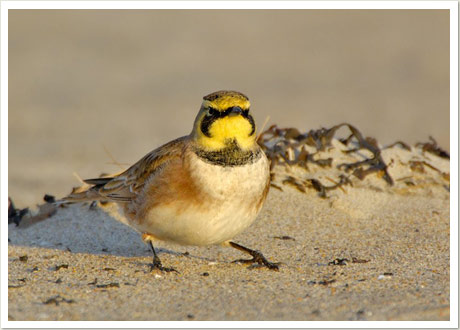|
| Horned Lark |
PHOTO: 1 |
 |
|
 |
| |
 |
| Horned Larks are present year round. In summer, several pairs breed on the beach, but only observers who arrive at dawn are likely to hear their twinkling flight song or catch a glimpse of one sneaking into the dunes to tend its nest. Larks are most common from late fall to early spring, when birds from further inland and north arrive to spend the winter. These birds feed mostly on seeds, sometimes associating with Snow Buntings at the dune edge. |
|
|